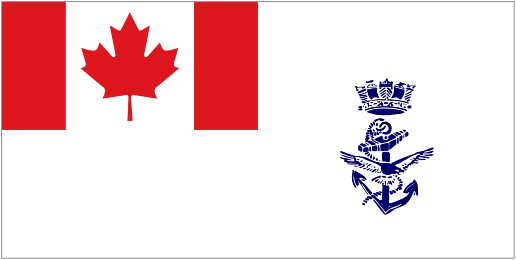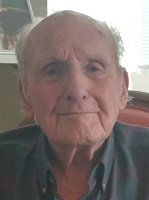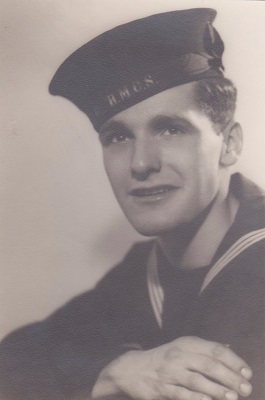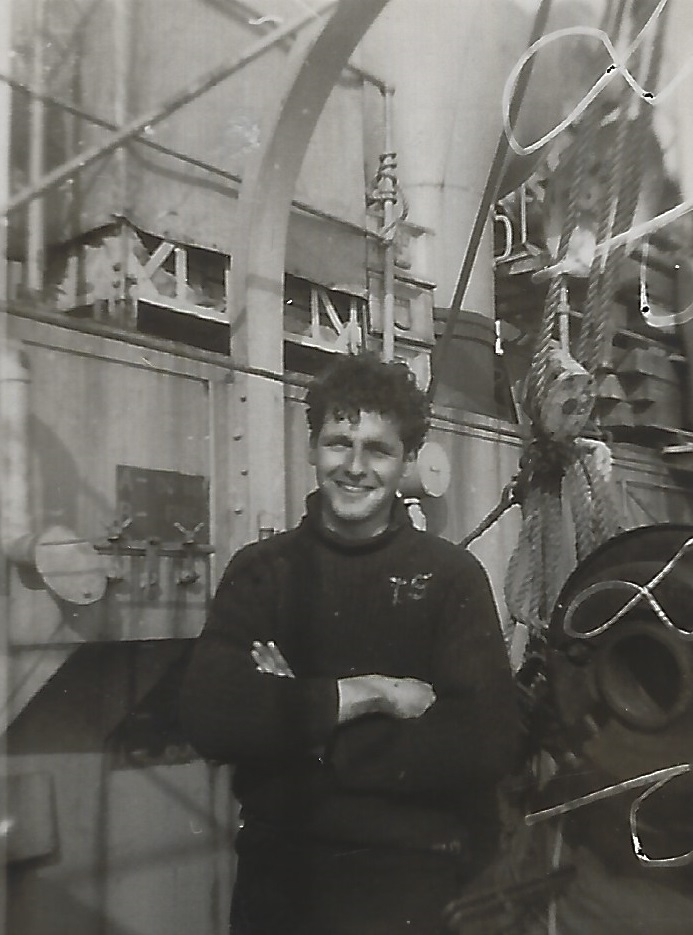|
 For Posterity's Sake
For Posterity's Sake 
A Royal Canadian Navy Historical Project
In memory of those who have Crossed the
Bar
|

|
Terence
Gordon (Terry) Sheard
Able
Seaman, RCNVR
Born: 25
Feb 1925
Died: 30
May 2021, Toronto, Ontario
|

|
SHEARD,
Terence Gordon (Terry) - passed away peacefully in his home in Toronto
at the age of 96. Devoted husband of the late Judith Sheard (1928 - 2011),
he is survived by his brother, D'Arcy, his children, Gordon, Robin and
Susan, and his grandchildren, Terence, Edwin, Alex, and Stephanie, all of
whom love him dearly and will miss him profoundly.
An
ardent fan of jazz music since the late 1930s, when he began listening to
works by Ellington, Goodman, and others, to many Terry is best known for his
passion for, and support of, that music, especially as performed by its
Canadian practitioners. He also harboured a lifelong love of the water,
granite, and pines of the of the eastern Georgian Bay, where he enjoyed many
summers over an 80-year span.
Terry
spent most of his youth in Toronto, with relatively brief sojourns in
Montreal and Ottawa, the family moving as required by the work of his
father, Terence Sheard Sr. QC. In 1943, Terry joined the Royal Canadian Navy
and saw active service on HMCS Barrie, among other vessels. In addition
to serving him as a source of pride until the end of his life, his naval
career furnished him with numerous stories, much-loved by family and
friends.
Following
WW II, Terry attended the University of Toronto, where he managed to receive
some higher education while not courting Judith, the love of his life. His
subsequent career in the investment world started at Dominion Securities,
where he was made partner in 1950, followed by stints with, among others,
the Eastern and Chartered Trust, Martin, Lucas and Co. (later Martin, Lucas
and Sheard), and T. G. Sheard Investment Counsel, which merged in 1997 with
Jarislowsky Fraser, where he remained until his retirement in 2010.
Terry
often referred to himself as a "lucky guy" who benefited from the
influence of a series of great people, including his mother, his
grandparents, his wife, the mentors who guided him during his naval
experience and early career, and his many friends. People who know Terry
feel lucky to have had the privilege. A celebration of Terry's life will be
held at a date and time to be announced. (Written by son Gord)
HMCS
BARRIE
|
 Memories
of My Days on HMCS BARRIE - as dictated by Terry Sheard to his
daughter Susan Memories
of My Days on HMCS BARRIE - as dictated by Terry Sheard to his
daughter Susan
I was an Able Seaman and by the end of the war slung my hammock in the
eyes of the ship in the forecastle. In time, my action station was the
starboard after-depth charge thrower. The D/C thrower was like a
cannon, which instead of throwing a ball, threw a heavy D/C and its
cradle some hundred yards from a corvette. There were two guns on each
side of the ship, fore and aft. The ship attacked a sub with a pattern
of at least six D/C's, four from each side, including at least two
rolled off the stern. I remember the great Lt. Harry Magill, saying
"Sheard, go back and put some shoes on."
HMCS BARRIE, on which I was destined to spend about a year and a
half, was a happy ship, which I credit to First Lieutenant Harry
Magill who was actually in charge of the Barrie from the time she was
commissioned in 1941. For some reason he seemed to adopt her, and all
efforts to promote him to a different command failed. It was well
known that he had good friends in the Halifax drafting office, and if
someone wasn't compatible, he was drafted off next time we reached
Halifax. That was how I came to be drafted aboard her in September,
when she came to Halifax after having a refit for extended forecastle,
and doing work-ups in Bermuda.
Magill had a hand-picked crew. For example, our cook Whitey had been
on the crack CNR transcontinental trains. Our two main petty officers
were Howard English, the Coxswain, and Maxwell Martin, the bos'n or
buffer. Both these guys had worked on Great Lakes freighters. Another
officer I remember well was Lieutenant Donald Boxer who was greatly
respected among the crew, since he was so chronically seasick that he
had to bring a bucket on watch. It was a big moment for me when I was
on the wheel one night and Lieutenant Boxer asked down the voice pipe
"Who's on the wheel?" When the answer came "Sheard,
sir", he said, "Well keep him there." I suspect he
remembered I had grown up on the Georgian Bay, and so had learned how
to keep "weather helm".
Of course, when the sea was particularly rough, Able Seaman
"Newfie" Cox was always called to the wheelhouse. On my very
first day on board, before reporting to the coxswain, I leaned my
ditty bag up against the fuel oil overflow, which was a mistake. I
then moved forward to the forecastle where I was confronted by an
immense creature who I subsequently learned was "Newfie"
Cox. He took one look at me and said, "I gets you tots, DOOEY!
" So I saluted him several times and then moved up to the
forecastle. "Newfie" Cox was the most experienced deep-water
sailor on board, having been a helmsman for the Bluenose in her races.
HMCS
BARRIE and her Sister-Ship HMCS SHAWINIGAN
Barrie was not only a happy ship; she was also a very lucky ship. In
November 1944, we escorted a ship to Newfoundland, together with our
sister corvette HMCS SHAWINIGAN (K136-we were K 138). We both tied
up for the night and then were asked to produce a patrol south of
Newfoundland the following night, and legend has it that our skipper
won the toss. SHAWINIGAN was struck by an acoustic torpedo and only
about six bodies were found, apparently, the upper deck watch in life
jackets. The captain of the U-boat told the story quite clearly in his
log as he survived the war. After that, we "streamed the C.A.T."
(Counter Acoustic Torpedo). The new German torpedo was used on escorts
near Halifax Harbour well into 1945.
1944 Rescue:
I remember well the day that the Barrie picked up fourteen survivors
adrift in an open boat after their ship had been torpedoed. It was my
first day at sea after joining the Barrie in Halifax, and we were
escorting the CNR ship Lady Rodney to St Johns. Jack Sheedy and I had
the afternoon bridge lookout watch--12:00 till 4:00. Perhaps because
we were both young, green hands, the brass (officers) put us on bridge
watch so they could keep an eye on us. Sheedy had the port side,
looking toward land, and I had the starboard. Jack Sheedy, who was the
youngest person aboard, spotted the lifeboat. The story was well
written up in the newspaper, and two of BARRIE'S people got mentioned
in dispatches. One was the Sick Bay Artificer, Mosher, and the other
was the person who brought the doctor to us from Lady Rodney. It was
so rough that he could not row, but had to use a paddle to move the
rowboat. When we landed the survivors in St. Johns, the newspapers
were there to cover the story. By the way, until I read the news
story, I didn't know that both BARRIE and SHAWINIGAN had picked up
submarine-like contacts!
An
email from Terry to his children on March 30th, 2020 during the Covid-19
pandemic:
Quite a scene on TV today as a big Navy hospital ship sailed into NY
harbor. I have to tell you it reminded me of another dramatic scene when
the small corvette BARRIE tore full-speed up New York's East River,
under the bridges, on up the river, horn blowing and flags flying, to
berth at the US Staten Island naval base. And the great treatment we got
there: Strawberry ice cream!! Nothing like that in Canadian ports. I
remember it almost 80 years later.
|

Terry
Sheard aboard HMCS BARRIE
From
the collection of Howard Samuel (Sandy) (Sam)
Sanderson, CPO, RCNVR
Crossed
the Bar Index
HOME PAGE
SHIP INDEX
CONTACT
|
 For Posterity's Sake
For Posterity's Sake 



